Microstructure and Properties of FeCrMnxAlCu High-Entropy Alloys and Coatings
Abstract
1. Introduction
2. Materials and Methods
2.1. Preparation of HEAs through Vacuum Arc Melting
2.2. Cold Spray-Assisted Induction Remelting HEA Coating Preparation
2.3. Microstructural Characterization and Performance Testing of FeCrMnxAlCu HEAs and Coatings
3. Results and Discussion
3.1. Phase Composition of FeCrMnxAlCu HEAs and Coatings
3.2. Microstructural Morphology of FeCrMnxAlCu HEAs and Coatings
3.3. Microhardness and Wear Resistance of FeCrMnxAlCu HEAs and Coatings
4. Conclusions
- (1)
- Vacuum arc melting and cold spray-assisted induction remelting were used to prepare FeCrMnxAlCu HEAs and coatings. The alloys and coatings comprised simple BCC and FCC solid solution structures, with a microstructure composed of equiaxed dendrites + an interdendritic structure.
- (2)
- The vacuum arc melting process for preparing the FeCrMnxAlCu HEAs led to the formation of precipitated compounds. In contrast, no precipitated compound was formed during the induction remelting preparation of the FeCrMnxAlCu HEA. The BCC phase in the vacuum arc-melted produced alloys had lower lattice distortion, while the BCC phase in the induction-remelted coatings had higher lattice distortion. This lattice distortion increased the resistance to dislocation motion and hindered slip.
- (3)
- The vacuum arc-melted produced FeCrMnxAlCu HEAs exhibited a maximum hardness of 405 HV and a wear rate of 4.76 × 10−5 mm3/(N·m), whereas the induction-remelted produced FeCrMnxAlCu HEA coatings exhibited a maximum hardness of 586 HV and a wear rate of 2.95 × 10−5 mm3/(N·m). The BCC phase solid solution-strengthening effect of the FeCrMnxAlCu HEA coating was more significant, resulting in higher coating hardness and lower wear rate. The predominant wear mechanisms in the induction-remelted produced FeCrMnxAlCu HEA coatings were adhesive, abrasive, and oxidative wear.
Author Contributions
Funding
Institutional Review Board Statement
Informed Consent Statement
Data Availability Statement
Conflicts of Interest
References
- Yeh, J.W.; Chen, S.K.; Lin, S.J.; Gan, J.Y.; Chin, T.S.; Shun, T.T.; Tsau, C.H.; Chang, S.Y. Nanostructured High-entropy Alloys with Multiple Principal Elements: Novel Alloy Design Concepts and Outcomes. Adv. Eng. Mater. 2004, 6, 299–303. [Google Scholar] [CrossRef]
- Zhang, Y.; Zuo, T.T.; Tang, Z.; Gao, M.C.; Dahmen, K.A.; Liaw, P.K.; Lu, Z.P. Microstructures and properties of high-entropy alloys. Prog. Mater. Sci. 2014, 61, 1–93. [Google Scholar] [CrossRef]
- Miracle, D.B.; Senkov, O.N. A critical review of high entropy alloys and related concepts. Acta Mater. 2017, 122, 448–511. [Google Scholar] [CrossRef]
- Lee, C.F.; Shun, T.T. Effect of Fe content on microstructure and mechanical properties of Al0·5CoCrFexNiTi0.5 high-entropy alloys. Mater. Charact. 2016, 114, 179–184. [Google Scholar] [CrossRef]
- Liu, Y.; Xu, Z.; Xu, G.; Chen, H. Influence of Al Addition on the Microstructure and Wear Behavior of Laser Cladding FeCoCrNiAlx High-Entropy Alloy Coatings. Coatings 2023, 13, 426. [Google Scholar] [CrossRef]
- Li, H.; Li, X.; Jin, C.; Li, Q.; Ma, Q.; Hua, K.; Wang, H.; Liu, W. Mechanical and tribological performance of AlCr0.5NbTaxTi4–x (x = 0, 0.5, 1) refractory high-entropy alloys. J. Mater. Sci. Technol. 2023, 156, 241–253. [Google Scholar] [CrossRef]
- Xu, Y.; Li, Z.; Liu, J.; Chen, Y.; Zhang, F.; Wu, L.; Hao, J.; Liu, L. Microstructure Evolution and Properties of Laser Cladding CoCrFeNiTiAlx High-Entropy Alloy Coatings. Coatings 2020, 10, 373. [Google Scholar] [CrossRef]
- Hirscher, M.; Yartys, V.A.; Baricco, M.; von Colbe, J.B.; Blanchard, D.; Bowman, R.C., Jr.; Broom, D.P.; Buckley, C.E.; Chang, F.; Chen, P.; et al. Materials for hydrogen-based energy storage: Past, recent progress and future outlook. J. Alloys Compd. 2020, 827, 153548. [Google Scholar] [CrossRef]
- Liu, Y.; Chen, Z.; Shi, J.; Wang, Z.; Zhang, J.; Chen, Y. The effect of Al content on microstructures and comprehensive properties in AlxCoCrCuFeNi high entropy alloys. Vacuum 2018, 161, 143–149. [Google Scholar] [CrossRef]
- Totten, G.E.; Funatani, X.K. Handbook of Mechanical Alloy Design; Marcel Dekker, Inc.: New York, NY, USA, 2004. [Google Scholar]
- Feng, L.; Yuan, Y.; Bian, C.; Wang, N.; Ma, K. Microstructure and properties of FexCrMnAlCu high-entropy alloy. Mater. Sci. Technol. 2023, 39, 1245–1254. [Google Scholar] [CrossRef]
- Liu, S.; Zhao, G.; Wang, X.; Zhou, C. Design and characterization of AlNbMoTaCux high entropy alloys laser cladding coatings. Surf. Coat. Technol. 2022, 447, 128832. [Google Scholar] [CrossRef]
- Feng, L.; Yang, W.-J.; Ma, K.; Yuan, Y.-D.; An, G.-S.; Li, W.-S. Microstructure and Properties of Cold Spraying AlCoCrCuFeNix HEA Coatings Synthesized by Induction Remelting. Mater. Technol. 2023, 37, 2567–2579. [Google Scholar] [CrossRef]
- Ma, K.; Feng, L. Microstructure and Properties of FeCrMnAlCu HEA Coatings Synthesized by Induction Remelting and Laser Remelting. Rare Met. Mater. Eng. 2023, 52, 111–118. [Google Scholar]
- Liu, J.; Ma, K.; Ding, Y.; Feng, L.; Li, W.; Li, L. Microstructure and Properties of an FeCoCrAlCu HEA Coating Synthesized via the Induction Remelting Method. Coatings 2023, 13, 399. [Google Scholar] [CrossRef]
- Yao, Z.; Xiao, G.; Ma, K.; Feng, L. Microstructure and Properties of AlCrCoFexNiCu High-Entropy Alloy Coating Synthesized via Cold Spraying-Assisted Induction Remelting Method. Trans. Indian Inst. Met. 2023, 76, 2063–2072. [Google Scholar] [CrossRef]
- Wang, Y.; Lu, X.; Yuan, N.; Ding, J. A novel nickel-copper alternating-deposition coating with excellent tribological and antibacterial property. J. Alloys Compd. 2020, 849, 156–222. [Google Scholar] [CrossRef]
- Wang, J.; Zhang, B.; Yu, Y.; Zhang, Z.; Zhu, S.; Lou, X.; Wang, Z. Study of high temperature friction and wear performance of (CoCrFeMnNi)85Ti15 high-entropy alloy coating prepared by plasma cladding. Surf. Coat. Technol. 2020, 384, 125337. [Google Scholar] [CrossRef]
- Praveen, S.; Murty, B.S.; Kottada, R.S. Alloying behavior in multi-component AlCoCrCuFe and NiCoCrCuFe high entropy alloys. Mater. Sci. Eng. A 2012, 534, 83–89. [Google Scholar] [CrossRef]
- Zhang, Y.; Zhang, P.; Liu, H.; Li, Z.; Shi, C.; Yan, D. The effect of Ti and B4C on the microstructure and properties of the laser clad FeCoCrNiMn based high entropy alloy coating. Surf. Coat. Technol. 2022, 441, 128499. [Google Scholar]
- Jiang, W.; Ye, W.; Bo, J.; Wang, X.; Ma, T.; Zhu, D. Microstructure and Mechanical Properties of Al0.5Nb1.5TiV2-Zr0.5 Refractory High Entropy Alloy. Rare Met. Mater. Eng. 2023, 52, 846–851. [Google Scholar]
- Li, Q.; Lv, S.; Hu, X.; Lan, Y.; Liu, J. Effects of Nb additions on the microstructure and tribological properties of Al0.25CrFeNi1.75 high-entropy alloy. Intermetallics 2022, 151, 107715. [Google Scholar] [CrossRef]
- Geng, Y.; Tan, H.; Cheng, J.; Chen, J.; Sun, Q.; Zhu, S.; Yang, J. Microstructure mechanical and vacuum high temperature tribological properties of AlCoCrFeNi high entropy alloy based solid-lubricating composites. Tribol. Int. 2020, 151, 106444. [Google Scholar] [CrossRef]
- Li, X.; Feng, Y.; Liu, B.; Yi, D.; Yang, X.; Zhang, W.; Chen, G.; Liu, Y.; Bai, P. Influence of NbC particles on microstructure and mechanical properties of AlCoCrFeNi high-entropy alloy coatings prepared by laser cladding. J. Alloys Compd. 2019, 788, 485–494. [Google Scholar] [CrossRef]

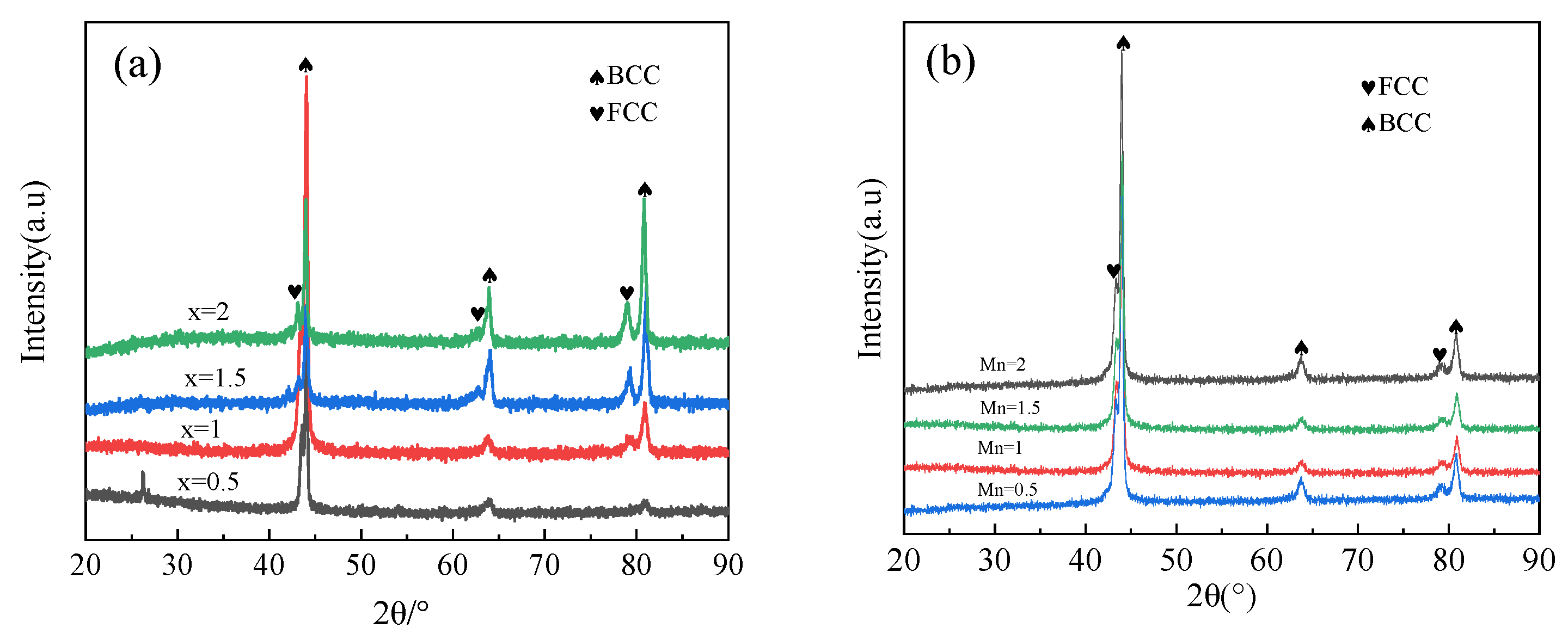
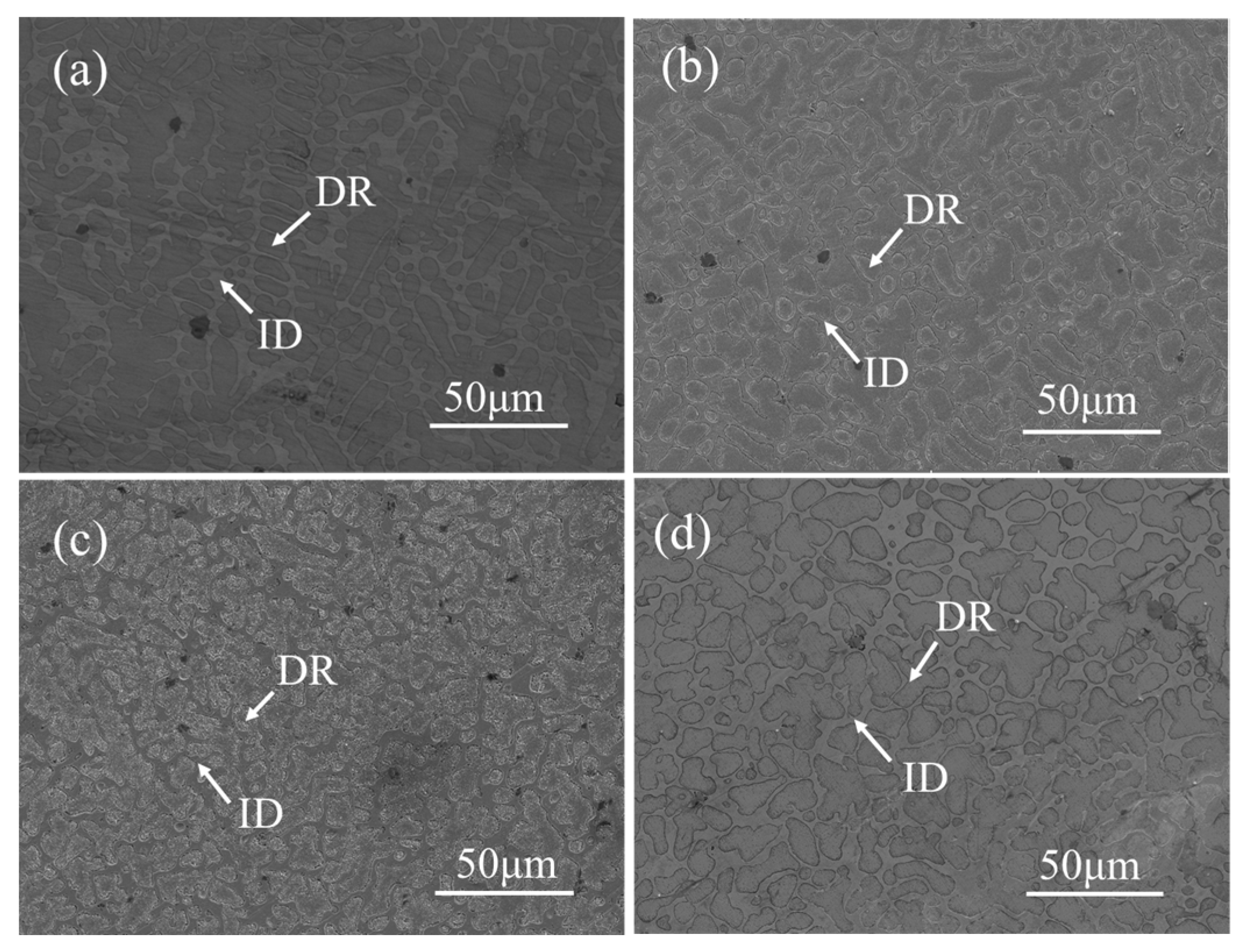


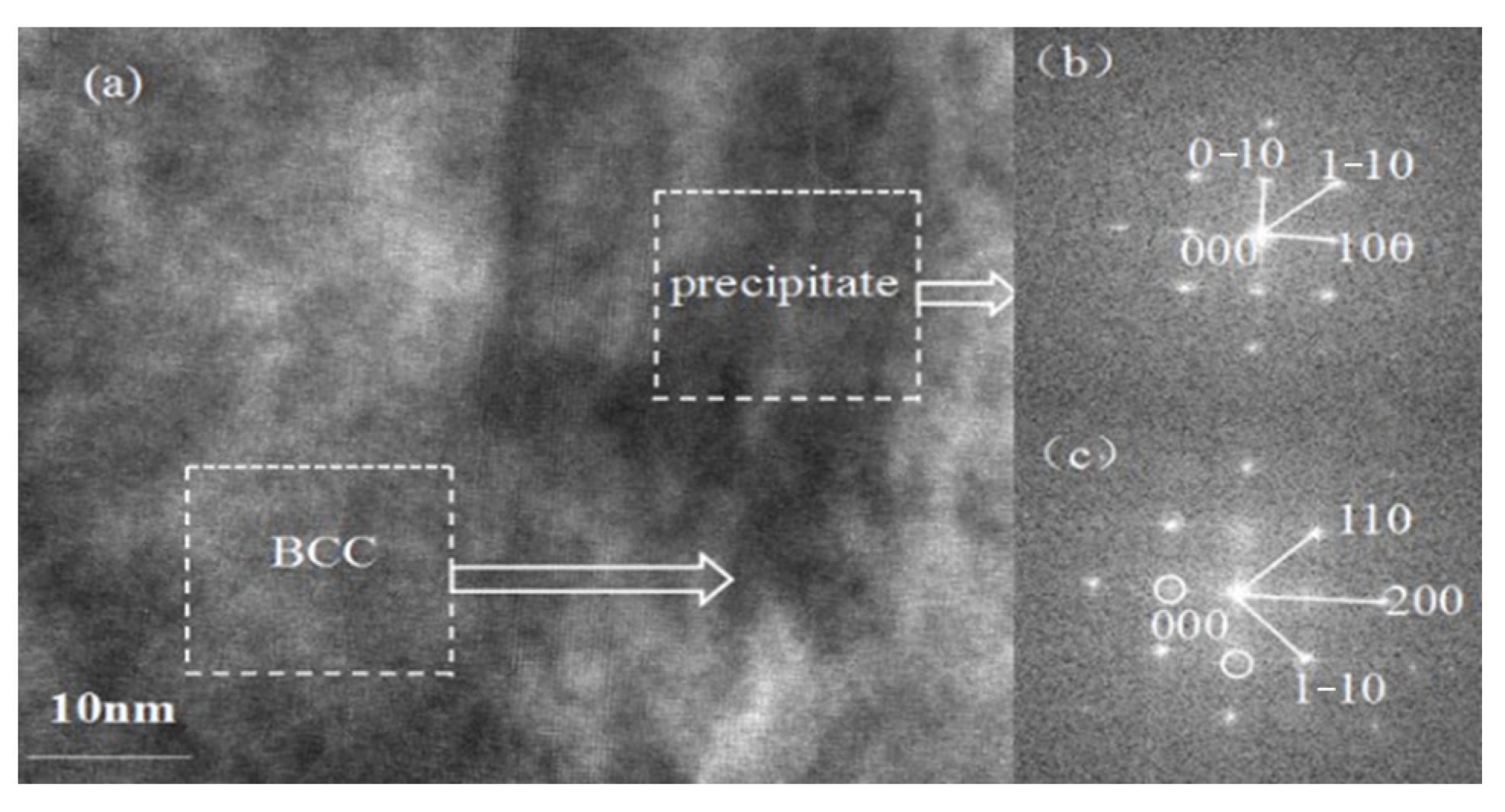
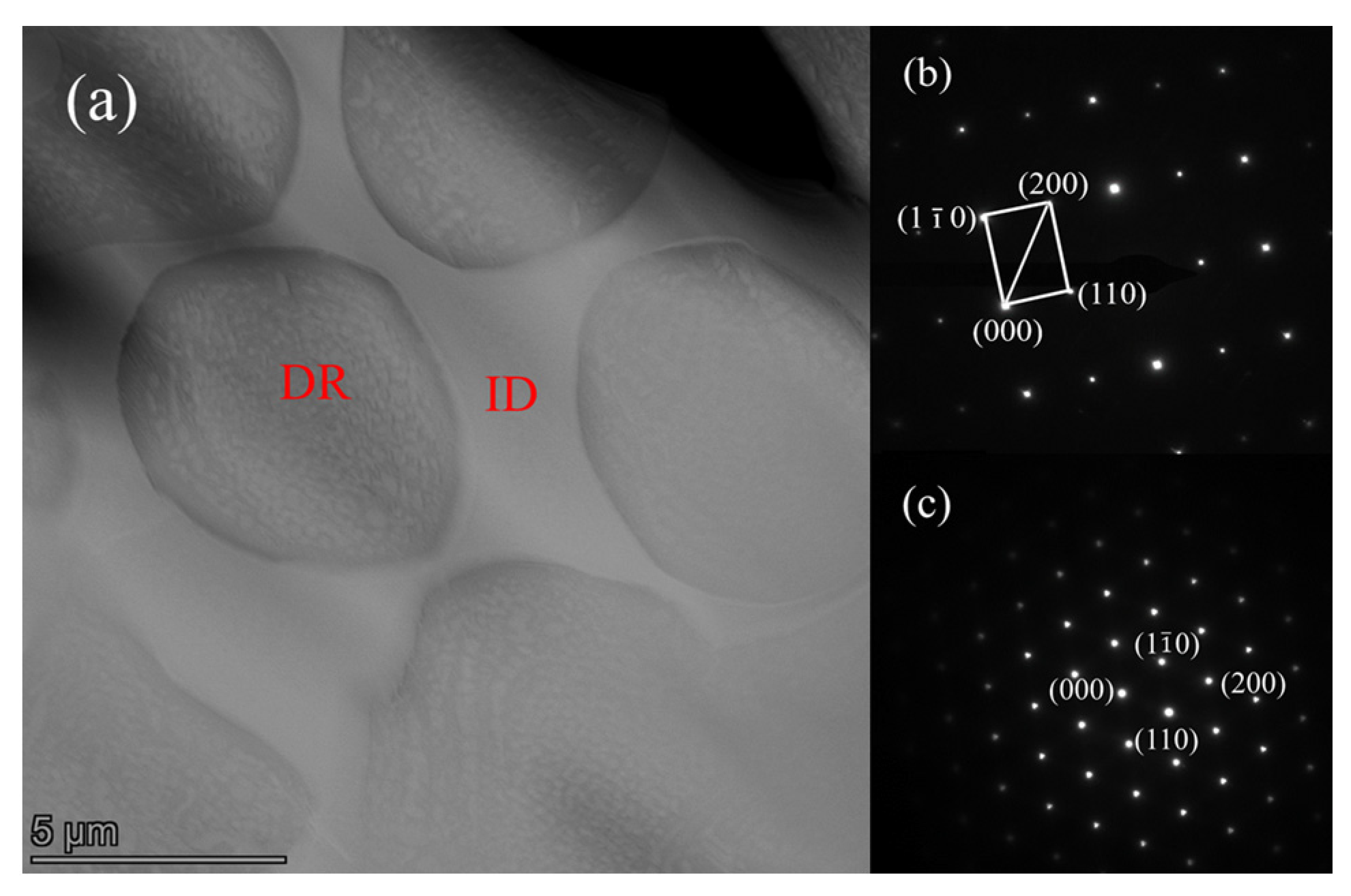
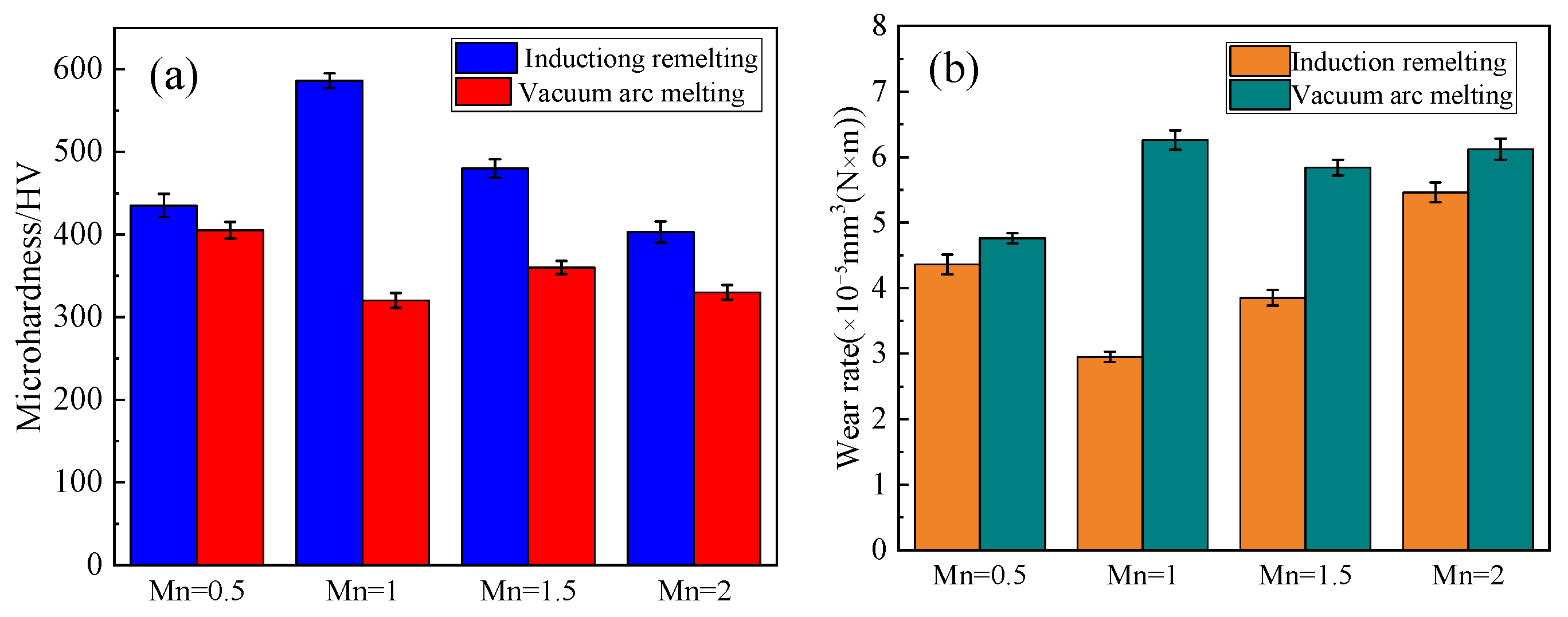
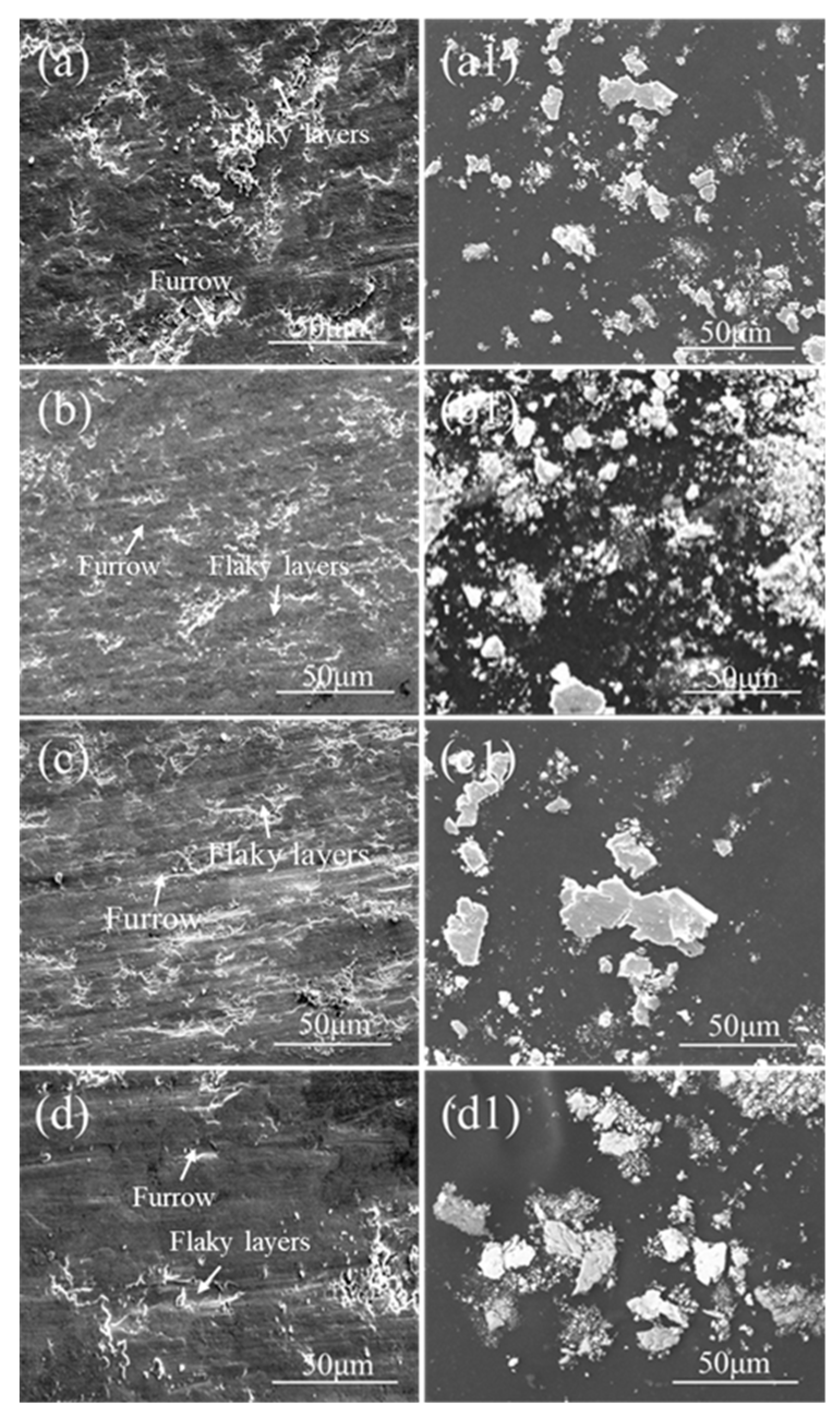
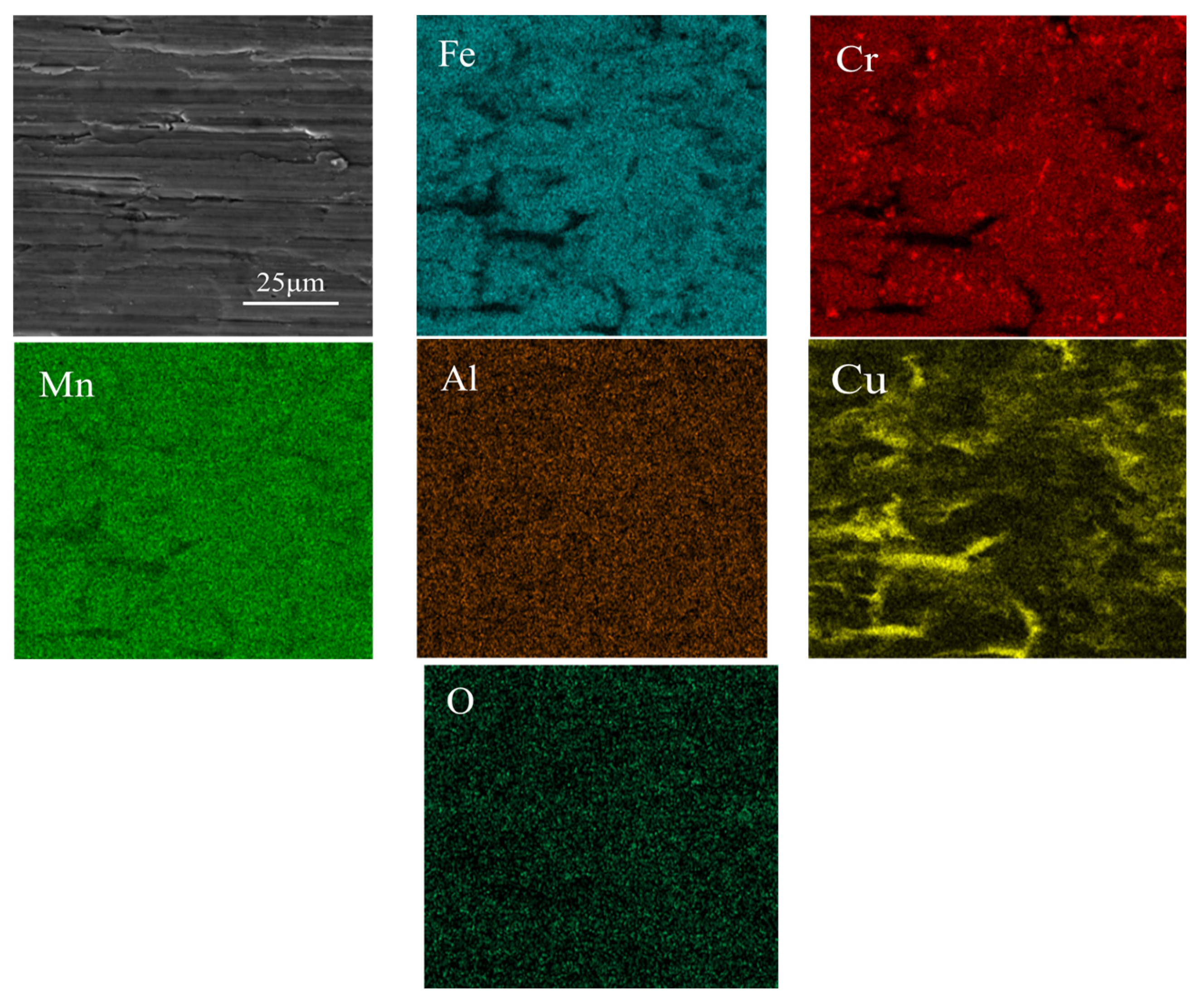

Disclaimer/Publisher’s Note: The statements, opinions and data contained in all publications are solely those of the individual author(s) and contributor(s) and not of MDPI and/or the editor(s). MDPI and/or the editor(s) disclaim responsibility for any injury to people or property resulting from any ideas, methods, instructions or products referred to in the content. |
© 2023 by the authors. Licensee MDPI, Basel, Switzerland. This article is an open access article distributed under the terms and conditions of the Creative Commons Attribution (CC BY) license (https://creativecommons.org/licenses/by/4.0/).
Share and Cite
Ma, K.; Feng, L.; Wang, Z. Microstructure and Properties of FeCrMnxAlCu High-Entropy Alloys and Coatings. Coatings 2023, 13, 1401. https://doi.org/10.3390/coatings13081401
Ma K, Feng L, Wang Z. Microstructure and Properties of FeCrMnxAlCu High-Entropy Alloys and Coatings. Coatings. 2023; 13(8):1401. https://doi.org/10.3390/coatings13081401
Chicago/Turabian StyleMa, Kai, Li Feng, and Zhipeng Wang. 2023. "Microstructure and Properties of FeCrMnxAlCu High-Entropy Alloys and Coatings" Coatings 13, no. 8: 1401. https://doi.org/10.3390/coatings13081401
APA StyleMa, K., Feng, L., & Wang, Z. (2023). Microstructure and Properties of FeCrMnxAlCu High-Entropy Alloys and Coatings. Coatings, 13(8), 1401. https://doi.org/10.3390/coatings13081401



